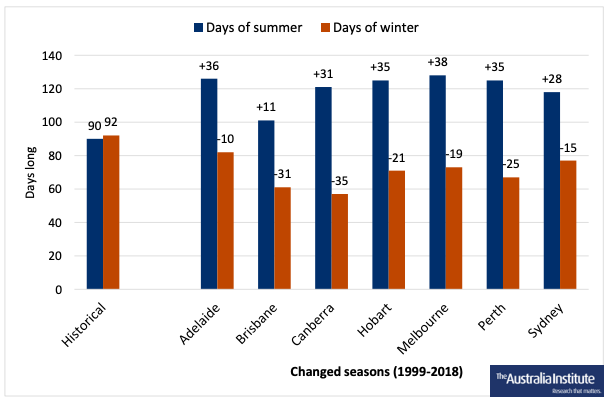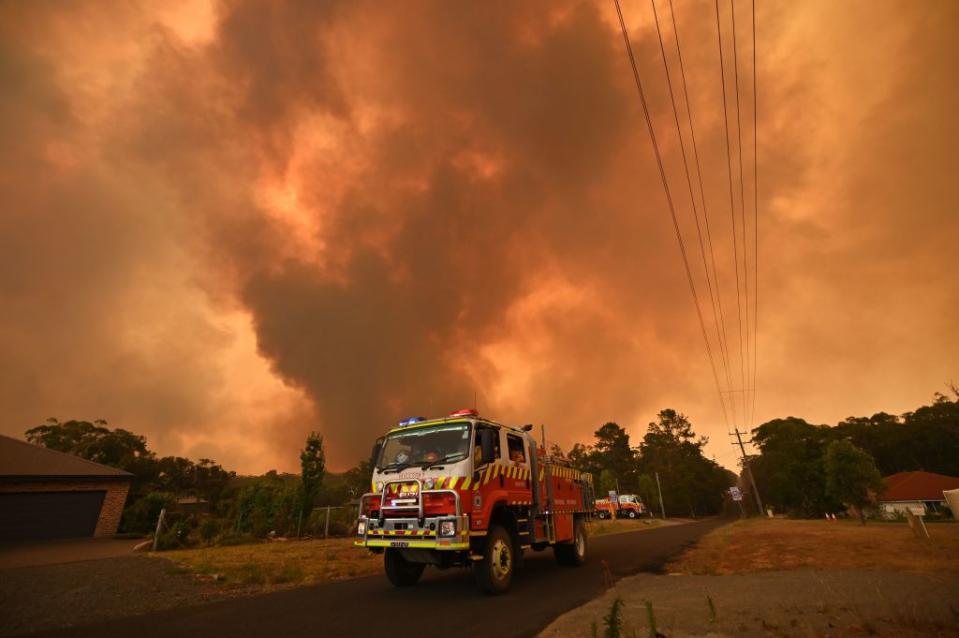Australian summers now a month longer – and the trend is set to continue
Australia’s soaring temperatures mean summers have been prolonged by at least a month – and they’re only going to get longer, new research says.
Bureau of Meteorology data from two 20-year periods spaced 50 years apart has been analysed and compared by the Australia Institute to reveal all state capitals are enduring hotter summers and for longer periods.
“Temperatures which were considered a regular three month summer in the 1950s, now span from early to mid-November all the way to mid-March,” said Richie Merzian, Climate & Energy Program Director at the Australia Institute.
Researchers Tom Swann and Mark Ogge analysed temperature data between 1950 to 1969 and 1999 to 2018 from 70 weather stations across the country.

They worked out the average temperature at the start of summer in the 50s and 60s before identifying the same temperature over the previous two decades.
“Temperatures that marked the start of summer now come around two weeks earlier; temperatures that marked the end of summer now come around two weeks later,” the reports states.
As the summer expands, the research reveals spring and autumn has shifted and winter is now on average three to four weeks shorter – meaning in the last five years the average summer is now twice as long as winter.
“Our findings are not a projection of what we may see in the future. It’s happening right now,” Mr Merzian said.
“Following the hottest summer on record, it commonplace to hear older Australians claim summers aren’t what they use do be. And they are right.”
In Sydney, summer is now longer than 28 days, and Melbourne by 38 days.
And the issue is even worse in regional areas. Port Macquarie is experiencing an even longer summer, seven weeks extra compared to the 50s and 60s.

Longer summers increase fire danger
The think-tank says the shift in temperature has made conditions far more dangerous, something Australia has witnessed in this year’s “unprecedented” bushfire season where 34 people died across the country.
“Global heating is already making Australian summers a longer and more dangerous ordeal than they used to be,” Mr Merzian said.
“Extreme heat events are the most fatal of all natural hazards and have been responsible for more deaths in Australia than all other natural hazards put together.”
“As the length of the bushfire summer season extends, the window to enforce bushfire management strategies, typically in winter, shrinks.”
The research paper said the ongoing changes will have “increasingly profound implications for life in Australia”.

“Longer, hotter summers mean longer hotter fires seasons, more heatwaves and greater exposure to heat related illnesses,” it said.
Those most vulnerable will be the elderly, those spending large periods in un-airconditioned environments and people who work outside.
The change will also make us rethink the way we socialise and take part in activities such as competitive and recreational sport, the paper said.
The increased heat, which has contributed to the ongoing drought across NSW and Queensland, will continue to punish farmers.
“Agricultural crops will be damaged and livestock will suffer. Entire ecosystems are at risk,” it said.
Government action needed, think-tank says
Prime Minister Scott Morrison and the government has faced intense scrutiny for their climate change response, and in particular, during the bushfire season.
While Mr Morrison said he is committed to reducing the nation’s carbon footprint and acting to prevent climate change, Mr Merzian said current emission targets aren’t sufficient.
“Australia is currently experiencing an average of 1 degree of global warming and summers have extended by around a month,” he explained.
'It's quite startling': Before-and-after images show impact of rain dumping
'Animals are dying and starving': Call for charity to release more donations
Thousands attend star-studded mega concert for bushfire relief
“The Australian government’s current emission reduction targets are aligned with 3 to 4 degrees of warming, which leaves young Australians facing ever lengthening summers with significant consequences.”
The federal government has committed to the Paris agreement, which aims for a 26 to 28 per cent reduction on 2005 greenhouse gas emissions levels by 2030.
The agreement also includes a pact to achieve net zero emissions in the second half of the century.
Australia warming more than the global average
“[Longer summers and shorter winters] are likely to continue indefinitely unless greenhouse gas emissions are decisively reduced, ultimately to net-zero,” Mr Merzian said.
Bureau of Meteorology head of climate monitoring Karl Braganza said Australia had warmed by about 1.4 degrees Celsius while the rest of the world had increased by 1.1C.
"Australia warms slightly more than the global average," Dr Braganza told a Senate estimates committee in Canberra on Monday.
BOM chief Andrew Johnson said Australia was expected to become drier and warmer, which would see the risk of severe fire weather continue.
With AAP
Do you have a story tip? Email: newsroomau@yahoonews.com.
You can also follow us on Facebook, Instagram and Twitter and download the Yahoo News app from the App Store or Google Play.




